#semsiruhsar hatun
Explore tagged Tumblr posts
Photo

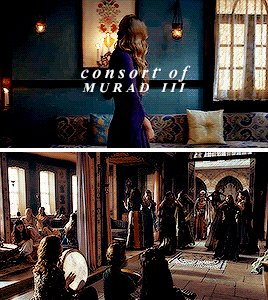



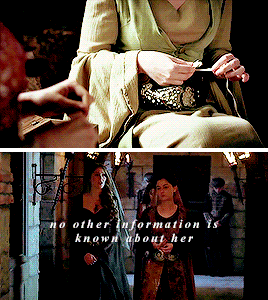
(OTTOMAN) WOMEN’S HISTORY MEME | 5 royal mothers: Şemsiruhsar, mother of Rukiye Sultan
The fact that so little is known about these concubines of non-haseki rank should not lead us to assume that they were completely deprived of status and power, however. That they enjoyed the prerogatives of a member of the royal family is suggested by the fact that Şemsiruhsar Khatun, one of the many concubines of Murad III and the mother of a daughter, created an endowment for the recitation of the Qur’an in the mosque of the Prophet in Medina. — Leslie P. Peirce, The Imperial Harem: Women and Sovereignty in the Ottoman Empire
204 notes
·
View notes
Photo

Family of Murad III
#murad iii#safiye#safilye sultan#semsiruhsar#semsiruhsar hatun#nazperver#nazperver hatun#sah-i huban#sah-i huban hatun#fakriye#fakriye hatun#mihriban#mihriban hatun#ayse sultan#ayse#fatma sultan#fatma#hüma#hümasah#hümasah sultan#mehmed iii#selim#mahmud#cihangir#süleyman#suleiman#abdullah#mustafa#bayezid#abdurrahman
27 notes
·
View notes
Photo


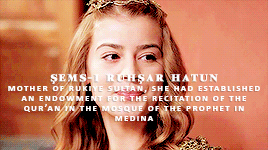

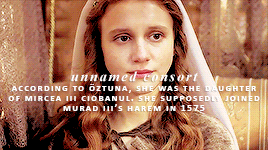



𝙤𝙩𝙩𝙤𝙢𝙖𝙣 𝙘𝙤𝙣𝙨𝙤𝙧𝙩𝙨: Murad III
Murad III, not satisfied with the girls in the harem, engaged in relationships with women from outside as well. For this reason it was claimed he had 100-130 children while he was alive, most of them dying before him; at his death, he had 49 children, 19 sons and 30 daughters. Moreover, it was stated that seven concubines who were pregnant with his children were thrown in the sea at his death. When Murad died, his concubines and consorts were sent to the Old Palace and were married to statesmen, with a ratio of two concubines per statesman. — M. Çağatay Uluçay, Padişahların Kadınları ve Kızları
#history#historyedit#ottoman history#safiye sultan#sahihuban hatun#semsiruhsar hatun#nazperver hatun#fakriye hatun#mihriban hatun#unnamed consorts of murad iii#*consorts#ottomanladiesedit
168 notes
·
View notes
Photo

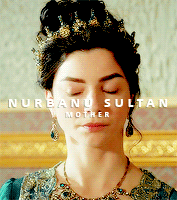



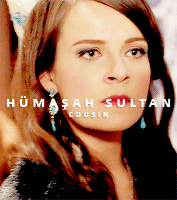

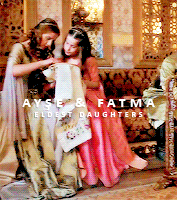

Murad III of the Ottoman Empire + the women in his life
#history#historyedit#ottoman history#murad iii#nurbanu sultan#safiye sultan#mihrimah sultan#sah sultan daughter of selim ii#ismihan sultan daughter of selim ii#gevherhan sultan daughter of selim ii#humasah sultan daughter of sehzade mehmed#ayse humasah hanimsultan#canfeda hatun#raziye hatun#semsiruhsar hatun#ayse sultan daughter of murad iii#fatma sultan daughter of murad iii#ottomanladiesedit#*womeninlife
719 notes
·
View notes
Note
What information is available about Şemsiruhsar Hatun and Rukiye Sultan, her daughter? Also, is it something interesting to know about Şahıhuban Hatun, consort of Murad III?
Şems-i Ruhsâr Hatun died before 1613, she was Rukiye Sultan’s mother and had a foundation in Medina (she provided funds for the recitation of prayers). She was identified by Uluçay through a Palace document which clearly stated her name and that she was Rukiye’s mother:
“Merhum Murad Han'ın evladından Rukiye Sultan'ın, bir süre önce ölen annesi sahibü'l-hayrat Şemsiruhsar Hatun binti Abdülgaffar'ın ruhuna, 8 kişinin Kuran okuması koşuluyla 1100 altın sikkeyi Mescid-i Nebevi'ye vakfettiği”
Rukiye Sultan (? - ?) married, according to Oztuna, Dâmâd Nakkaaş Hâşan Paşa in February 1613. Hâşan Paşa died in 1623, but it is not known if his wife was still alive at that moment; he had been Chief of the Janissaries twice, governor of Rumelia and Kubbe Vizier.
Şâh-i Hûbân Hatun was buried in a tomb in Yenibahçe next to another woman, during her life she had had foundations. Ahmet Refik called her Şahhuban.
#anon#ask post#ask: ottoman history#semsiruhsar hatun#rukiye sultan daughter of murad iii#sahihuban hatun
13 notes
·
View notes
Note
And what is known about Shemsiruhsarh-Khatun? Did she compete with Safiye?
I doubt that the mother of one daughter had the power to compete with the haseki and mother to the heir to the throne. About Şemsiruhsar we only know that she “created an endowment for the recitation of the Qur'an in the mosque of the Prophet in Medina.”, as Peirce says in The Imperial Harem.
13 notes
·
View notes
Note
Murad III + harem and children
Consorts:
Haseki Safiye Sultan: Albanian concubine presented to him by his cousin Hümaşah, she was his only consort for 20 years, when Murad III started sleeping with other women.
Şemsiruhsar Hatun: mother of Rukiye Sultan, she made a vakif for the reading of the Quran in the Mosque of the Prophet in Medina. She died before 1613.
Nazperver Hatun: appears in Ahmet Refik’s book Kadınlar Saltanati as one of Murad III’s consorts.
Şahıhuban Hatun: according to Ahmet Refik, she was buried in Yenibahçe with another consort.
Fakriye Hatun: according to Alderson, she was one of Murad III’s consorts.
Mihriban Hatun: again, according to Alderson she was one of Murad III’s consorts.
Unnamed consort: presented to Murad III by his son Mehmed, it could be one between Fakriye or Mihriban.
Children:
Ayşe Sultan (before 1565 - 15.5.1605): Murad and Safiye’s eldest child. She married Damad Ibrahim Paşa on 20 May 1586, who would serve as Grand Vizier three times. After the death of Ibrahim Paşa on 10 July 1601, she married Yemişçi Haşan Paşa in 1602, but he was executed in October 1603 by her brother Mehmed. In 1603 she built a fountain in honour of her first husband, located outside the Şehzade Mosque. Subsequently, she married her lover Güzelce Mahmud Paşa but she died soon later, on 15 May 1605. She was buried in the mausoleum of her father Murad. In her will, most of her wealth was left to the poor, orphans and sick; to the poor women in Mecca, Medina and Jerusalem and as ransom for Muslim female captives.
Fatma Sultan (before 1565 - ??): Murad and Safiye’s second child. On 8 December 1593 she married Kaptanıderya Halil Paşa in a magnificent ceremony. The marriage was described as very happy and they had a child together: Sultanzade Mahmud Bey (died in 1598). Halil Paşa died in 1603 and she subsequently married Vizier Cafer Paşa, though not according to Evliya Celebi.
Mehmed III (16/26.5.1566 - 21.12.1603): son of Safiye Sultan, he was the 13th Ottoman Sultan. (consorts and children here)
Şehzade Selim (1567 - 28.1.1595): executed by Mehmed III. Son of Safiye Sultan? (his date of birth would suggest this, but no source spoke of a second son of Safiye’s being alive at Murad III’s death)
Şehzade Mahmud (1568 - in or before 1581): son of Safiye Sultan
Unnamed prince (6.1582 - 6.1582): according to Alderson, he was born and died during the circumcision fest for prince Mehmed.
Şehzade Cihangir (2.1585 - 8.1585)
Şehzade Süleyman (2.1585 - 1585)
Şehzade Abdullah (1585 - 28.1.1595): executed by Mehmed III
Şehzade Mustafa (1585 - 28.1.1595): executed by Mehmed III
Şehzade Bayezid (1586 - 28.1.1595): executed by Mehmed III
Şehzade Cihangir (1587 - 28.1.1595): executed by Mehmed III
Şehzade Abdurrahman (?? - 28.1.1595): executed by Mehmed III
Şehzade Ahmed (?? - ??)
Şehzade Alaeddin Davud (?? - 28.1.1595): executed by Mehmed III
Şehzade Alemşah (?? - 28.1.1595): executed by Mehmed III
Şehzade Ali (?? - 28.1.1595): executed by Mehmed III
Şehzade Hasan (?? - 28.1.1595): executed by Mehmed III
Şehzade Hüseyin (?? - 28.1.1595): executed by Mehmed III
Şehzade Ishak (?? - 28.1.1595): executed by Mehmed III
Şehzade Murad (?? - 28.1.1595): executed by Mehmed III
Şehzade Osman (?? - 28.1.1595): executed by Mehmed III
Şehzade Ömer (?? - 28.1.1595): executed by Mehmed III
Şehzade Yusuf (?? - 28.1.1595): executed by Mehmed III
Hüma/Hümaşah Sultan (?? - ??): she may have been a daughter of Safiye’s, since she was born in Manisa. She married Lala Kara Sokoloviç Mustafa Paşa (cousin of Sokollu Mehmed Paşa), who died in 1580, and then Nişar Mustafazade Mehmed Paşa, who died in 1586. Nothing else is known about her. [here]
Fahriye Sultan (?? - after 1641): she married Çuhadar Ahmed Paşa in 1604, who died in 1618. According to Uluçay, she was married instead to the governor of Bosnia Sofu Bayram Paşa.
Fethiye Sultan (?? - ??): she does not appear in Sicill-i Osmani.
Rukiye Sultan (?? - ??): daughter of Şemsiruhsar Hatun, she was buried in the mausoleum of her father.
Mihrimah Sultan: she married Mirahur Ahmed Paşa in 1604.
Mihriban Sultan: she was buried in the mausoleum of Murad III.
17 unnamed daughters: died of smallpox in 1598.
Hatice Sultan: no information about her
sources:- A. D. Alderson - The Structure of the Ottoman Dynasty
- Leslie P. Peirce - The Imperial Harem: Women and Sovereignty in the Ottoman Empire
- Necdet Sakaoğlu - Bu Mülkün Kadın Sultanları
- M. Çağatay Uluçay - Padişahların Kadınları ve Kızları
#anon#ask post#ask: ottoman history#murad iii#safiye sultan#semsiruhsar hatun#ayse sultan daughter of murad iii#fatma sultan daughter of murad iii#fahriye sultan daughter of murad iii#humasah sultan daughter of murad iii#rukiye sultan daughter of murad iii#mihrimah sultan daughter of murad iii#unnamed daughters of murad iii#mehmed iii#*consortsandchildren
40 notes
·
View notes
Note
Do you have any information about any of the concubines of Murad lll after Safiye Sultan? I read something about his mother or sister offering him two Russian women.
Hello! Other known concubines of Murad III were:
Şemsiruhsar Hatun: mother of Rukiye Sultan, she died in or before 1613. She created an endowment for the recitation of the Qur'an in the mosque of the Prophet in Medina
Şâh-huban Hatun
Nazperver Hatun
Mihriban Hatun: Sakaoğlu says there was a Madrassa in Kumkapı built by a Mihriban Sultan, but she could have been a daughter of Murad III and not his concubine
Fakriye Hatun, maybe a slavic slave concubine presented by his son Mehmed
It is true that Ismihan Sultan gifted him two beautiful slave concubines that he accepted, but we don’t know their names or if they became mothers of children
13 notes
·
View notes
Note
Can you write some information about Şemsiruhsar Hatun concubine of Murad III and mother of Rukiye Sultan.
I am afraid that’s all we know about her. Uluçay found a document in the Topkapi Archives that identified Şemsiruhsar Hatun as Rukiye Sultan’s mother. In the document, Şemsiruhsar allocated funds for the recitation of the Quran in the mosque of the Prophet in Medina.
"Merhum Murad Han'ın evladından Ruhiye Sultan'ın, bir süre önce ölen annesi sahibü'l-hayrat Şemsiruhsar Hatun binti Abdülgaffar'ın ruhuna, 8 kişinin Kuran okuması koşuluyla 1100 altın sihkeyi Mescid-i Nebevi'ye vakfettiği"
In the document she is called Şemsiruhsar Hatun binti Abdülgaffar, which means that she was of slave origins. Sakaoğlu claims that the document indicates that she died before 1613.
10 notes
·
View notes